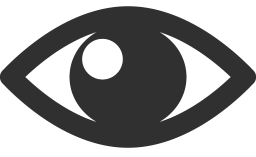Mapúa University School of Nursing inks memorandum of agreement (MOA) with MegaTEXTS Phil. Inc., a distributor of Elsevier in the Philippines. Through the agreement, Mapúa University becomes the first to implement SimChart for nursing in Asia-Pacific. (From L-R: Dr. Emmillie Joy Mejia, Dean of Mapúa University School of Nursing, Dr. Dodjie Maestrecampo, President and CEO of Mapúa University, Jean Tiu Lim, President of MegaTEXTS Phil. Inc., and Michael P. Cabral, Digital Solution Specialist of MegaTEXTS Phil. Inc.)
Future Filipino nurses are set to gain another competitive edge with global-ready documentation skills.
Mapúa University School of Nursing, in collaboration with Arizona State University (ASU), is set to revolutionize nursing education in the Philippines by introducing the simulated electronic health record (EHR) platform SimChart. Launching this June 2025, this initiative marks the first implementation of SimChart Learning in Asia-Pacific.
Distributed by MegaTEXTS Phil. Inc. in the country, SimChart, a simulated EHR software by Elsevier, is a cutting-edge educational tool that replicates real-world electronic documentation systems used in hospitals worldwide. It is designed as a system that combines practical, real-world experience in electronic documentation with fully integrated educator support to help incorporate EHR practice into the nursing program. It is a learning tool for both nursing students and healthcare professionals that enables one to master electronic charting, enhance clinical judgment in patient care, and thrive in today’s modern health care environment.
“Filipino nurses are globally recognized for their clinical skills,” said Dr. Emmillie Joy Mejia, Dean of the Mapúa University School of Nursing. However, in conversations with some of Filipino nurses working abroad, an unexpected concern cropped up in their practice.
“The traditional way of documentation in nursing is through writing in a steel chart. Whenever the doctors do their rounds, the nurses hold the chart and whatever is the advice or the nurses’ observations, we do it in writing,” Dean Mejia began.
“When it comes to nursing skills, of course Filipino nurses are on top. But when it comes to documentation in their work abroad, some of them were unfamiliar with SimChart because they do not know how to use technology in charting. Given the situation, we asked Elsevier for any software or resources that can bridge the gap between nurses and how the electronic health record is being done. The company introduced us to SimChart. We wanted to train our enrollees early in their student journey so that when they’re deployed in the clinical area and in private hospitals, our students would be familiar with EHR,” she continued, adding that using SimChart would also enable nursing students and nurses to seamlessly coordinate and share a collaborative electronic data with different healthcare workers such as doctors, medical technologists, pharmacists, and even with fellow nurses on medical cases.
Through this collaboration between Mapúa University School of Nursing and ASU, nursing students would not only be clinically competent but also digitally fluent—an increasingly essential skill in modern healthcare.
“The priority is for our students to be competent. The skills of Filipino nurses are good already but with SimChart, especially if they’re going to work abroad, they would know how to use it and there would be no unfamiliarity when the work setting requires its use,” Mejia stated.
The use of SimChart Learning will equip nursing students with various skills and benefits in the field.
“Almost half of our nursing program involves hands-on training in clinical and laboratory settings and half of it would be in skills laboratory. SimChart will be a core part of that experience to help our nursing students build confidence in documentation and interdisciplinary collaboration. The self-esteem of those working abroad who have no knowledge of how to operate and use SimChart is usually affected. The use of SimChart also develops the skill of collaborating with other healthcare workers. With SimChart, nursing students would have real data interpretation of how collaboration works. Although it’s a SimChart for Nursing, there are some areas there that the other programs can also cover and encode for interdisciplinary teamwork,” she explained.
Beyond nursing, SimChart will also be made available to students in related programs such as Pharmacy and Medical Technology/Medical Laboratory Practice, fostering a collaborative learning environment that mirrors real-world healthcare teamwork.
The benefits of SimChart extend beyond the classroom. By reducing time spent on manual documentation, nurses can devote more attention to patient care.
“The use of SimChart means more quality time with the patient and less time for documentation. Since nurses are now using electronic health records, there will be more focus on bedside care rather than dealing with paperwork,” she remarked.
The biggest advantage and benefit of SimChart Learning in Mapúa School of Nursing goes to its students and graduates.
“Employers often need to train new hires on EHR systems. By graduating at Mapúa School of Nursing with SimChart experience, students will be job-ready for global practice,” Dr. Mejia said.
This initiative is part of Mapúa University School of Nursing and ASU’s collaboration to deliver globally competitive education. To know more how SimChart Learning is transforming nursing education, visit:
 12
12




